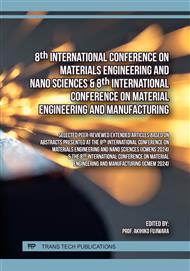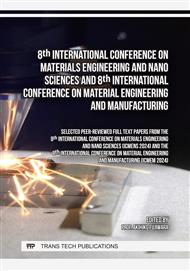p.25
p.31
p.37
p.45
p.53
p.59
p.65
p.71
p.79
Polyhydroxybutyrate/Polylactic Acid/Polybutylene Succinate Blend Filaments for 3D Printing Applications
Abstract:
Biopolymers have gained increased attention as viable alternatives to petroleum-based polymers, driven by growing awareness of sustainability and environmental impact. Polyhydroxybutyrate (PHB), a biopolymer derived from microorganisms, holds promise for biomedical applications due to its unique properties. However, its practical use has been hindered by certain limitations. In this study, we addressed these challenges by preparing blends of PHB with polylactic acid (PLA) and polybutylene succinate (PBS) using a twin-screw extruder. The thermal analysis revealed a reduction in the degree of crystallinity for PHB after blending, while its thermal transitions remained unaffected. The resulting immiscible blends exhibited partial compatibility, with dispersed phases of PLA and PBS uniformly distributed within the PHB matrix. Subsequently, we conducted a comprehensive examination of the mechanical properties of 3D-printed specimens. Our findings indicated a notable enhancement in the flexural modulus and flexural strength of the blends upon the addition of PLA and PBS.
Info:
Periodical:
Pages:
53-58
Citation:
Online since:
September 2024
Price:
Сopyright:
© 2024 Trans Tech Publications Ltd. All Rights Reserved
Share:
Citation:



